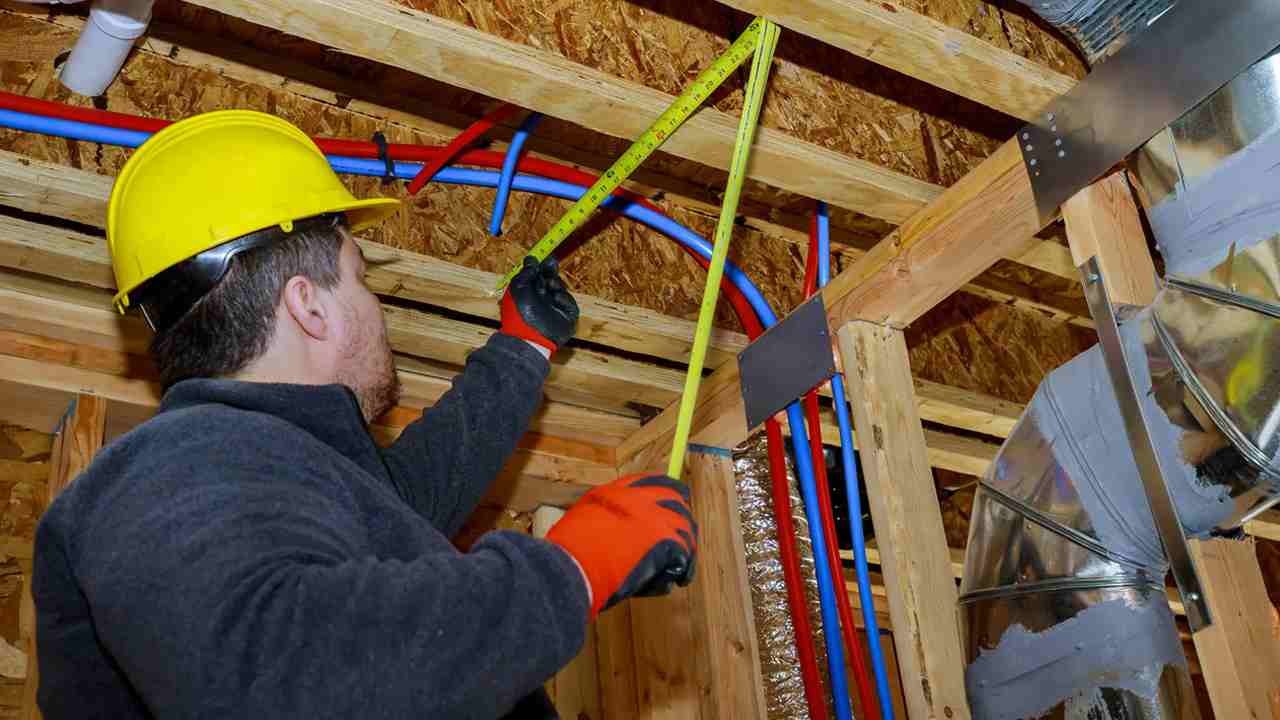Repiping a House with PEX may seem Difficult, but with the right information and materials, it can be a manageable project. Opting for PEX can provide you with many benefits, whether you have low water pressure, damaged pipes, or are planning a home renovation.
Table of Contents
Why Choose PEX for Repiping
Cross-linked polyethylene (PEX) has become popular due to its flexibility, corrosion resistance, and ease of installation. PEX, unlike traditional materials such as copper or galvanized steel, is expensive and may be suitable for many home layouts.
Advantages of PEX
The flexibility of PEX pipes makes them easy to install around corners and turns. They ensure continuous water flow and are resistant to scale buildup. PEX is also a good choice in the cold because it is less prone to freezing and bursting.
Comparison with Other Materials
Copper and steel pipes are commonly used, but PEX doesn’t hurt the quality. Its growing popularity among homeowners stems from its ease of installation and low labor costs.

Steps to Repipe House with PEX
1. Assessment and Planning
Before beginning the repacking process, it is essential to figure out your plumbing situation. Look for signs of corrosion, leaks or damage to existing pipes. Making a repiping plan will help organize your project and have the materials you need.
2. Tools and Materials
Gather the following materials to successfully begin a PEX repiping project: pressure gauge, PEX tubing, fittings, crimping tool, and pipe cutter. Save time during installation and have all the necessary materials in advance.
3. Preparation and Safety Measures
Start by turning off the water supply to the house. This makes repiping safe. Use proper safety measures, such as wearing protective gear, to reduce the risk of accidents.
4. Removing Old Pipes
To avoid unnecessary damage to surrounding structures, use pipe cutters to carefully remove old pipes. Dispose of old pipes responsibly, following local waste disposal regulations.
5. Installation of PEX Pipes
Now attention needs to be paid to the installation of the PEX pipes. Start by measuring and cutting the PEX tubing, according to your repipe plan. Use a crimping tool to ensure a leak-free connection. Take a systematic approach to cover every part of your home.
6. Testing the New System
Perform a pressure test after installation to detect any potential leaks or problems. Address these concerns immediately to guarantee a reliable and efficient plumbing system.
Benefits of PEX Repiping
The benefits of choosing PEX for repiping extend far beyond the installation process. Homeowners can be pleased with the improved water pressure, durability and corrosion resistance that ensure a longer lifespan of the plumbing system.
Cost to Repipe House With Pex
The upfront cost of PEX may vary, but the long-term benefits are clear. The total cost of PEX roofing, compared to traditional materials, takes into account maintenance and future repairs.
Maintenance Tips
Maintenance of PEX pipes is almost effortless. Regularly check for leaks, insulate exposed pipes to let in cold air, and make sure to extend the lifespan of the plumbing system.
Common Mistakes to Avoid
Avoid common mistakes, such as incorrect crimping, poor planning, or neglecting safety measures, to ensure a successful crimping project. Use these shortcomings to figure out a seamless reaping process.
Professional vs. DIY Repiping
If you want to hire a professional plumber or tackle the project yourself, it depends on your comfort level and complexity of the work. While professionals ensure accuracy, adventurous homeowners can follow DIY steps for success.
Environmental Impact
PEX is a safe choice in addition to its practical benefits. Its production requires less energy than traditional materials, contributing to a lower carbon footprint.
FAQs
1. Can I replace all my plumbing with PEX?
Yes, If you are considering replacing all of your plumbing, PEX is a suitable and comprehensive option. PEX, or cross-linked polyethylene, offers cost-effectiveness, durability, and flexibility.
2. Can PEX be used in residential plumbing?
Absolutely! PEX, or cross-linked polyethylene, is a very good and common material for household plumbing. It is very popular among homeowners and plumbing professionals due to its versatility, durability and ease of installation.
3. How long will PEX pipe last?
For 40 years, PEX pipes are a safe choice for residential plumbing systems because they are durable and last a long time. PEX pipes can typically last more than four decades, so they are a good investment for homeowners.
4. Does PEX work in all climates?
PEX works in cold areas. Its flexibility and cold-resistant properties make it a multifunctional choice.
5. Can I remodel my house with PEX?
While it is possible to make repairs yourself, it requires a good understanding. An experienced person should be hired for complex projects.
6. Do PEX pipes cost more than copper pipe?
Yes, PEX is generally more cost effective than copper pipe. Its installation is very easy and material cost is low, which overall saves money.
Conclusion
Repairing older home plumbing systems with PEX provides a cost-effective and durable solution. Homeowners can enjoy the benefits of PEX while improving their homes for years to come with proper planning, the right tools, and attention to safety.

